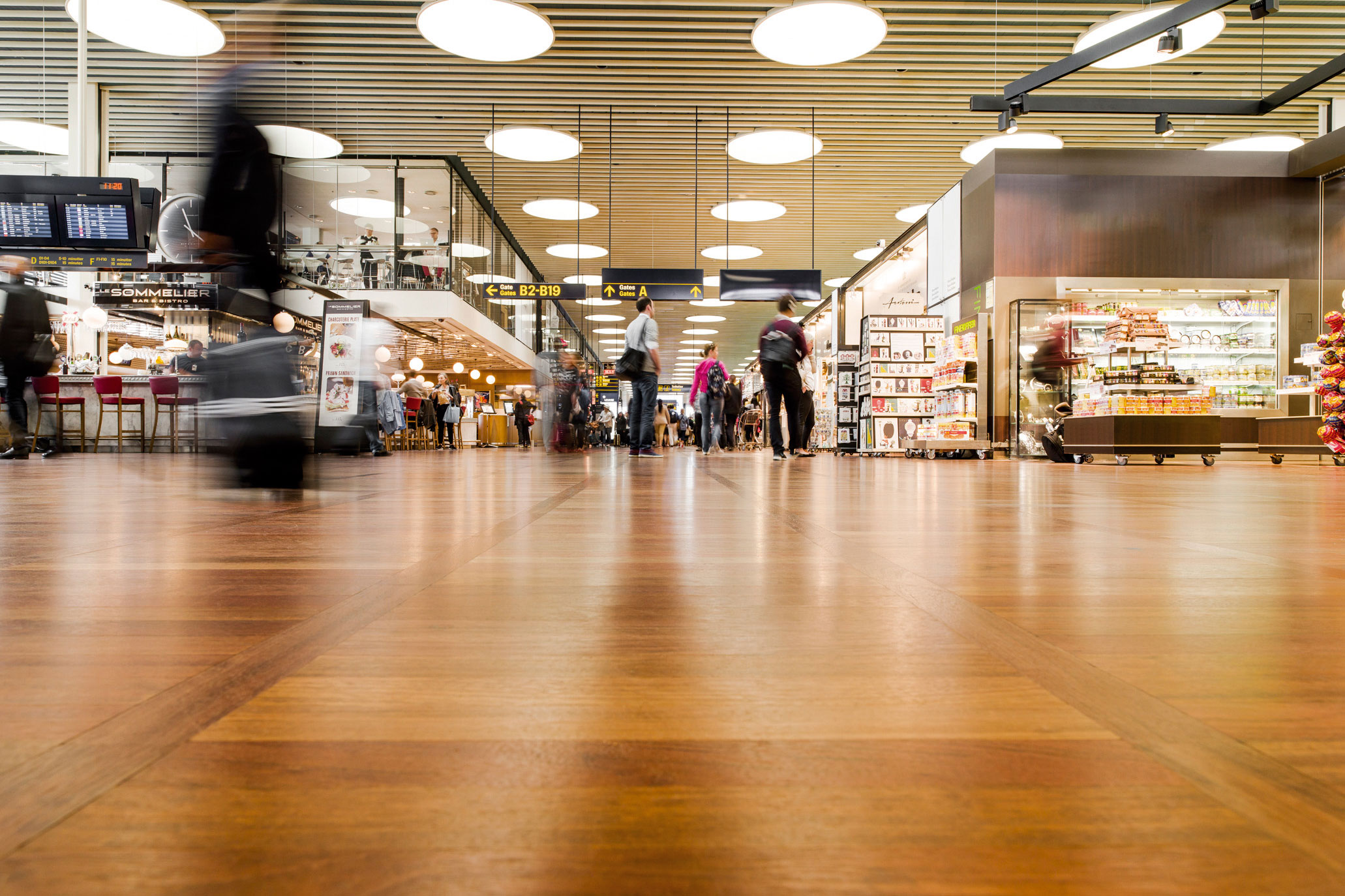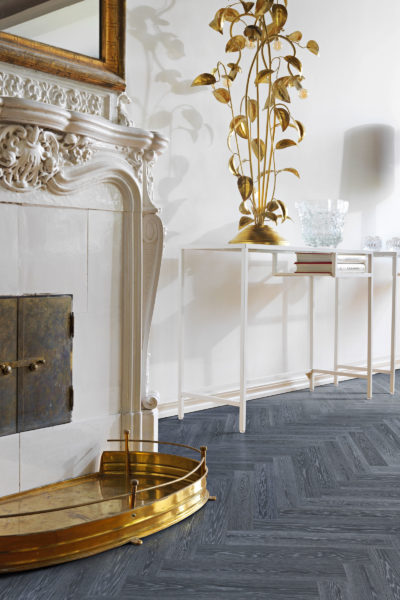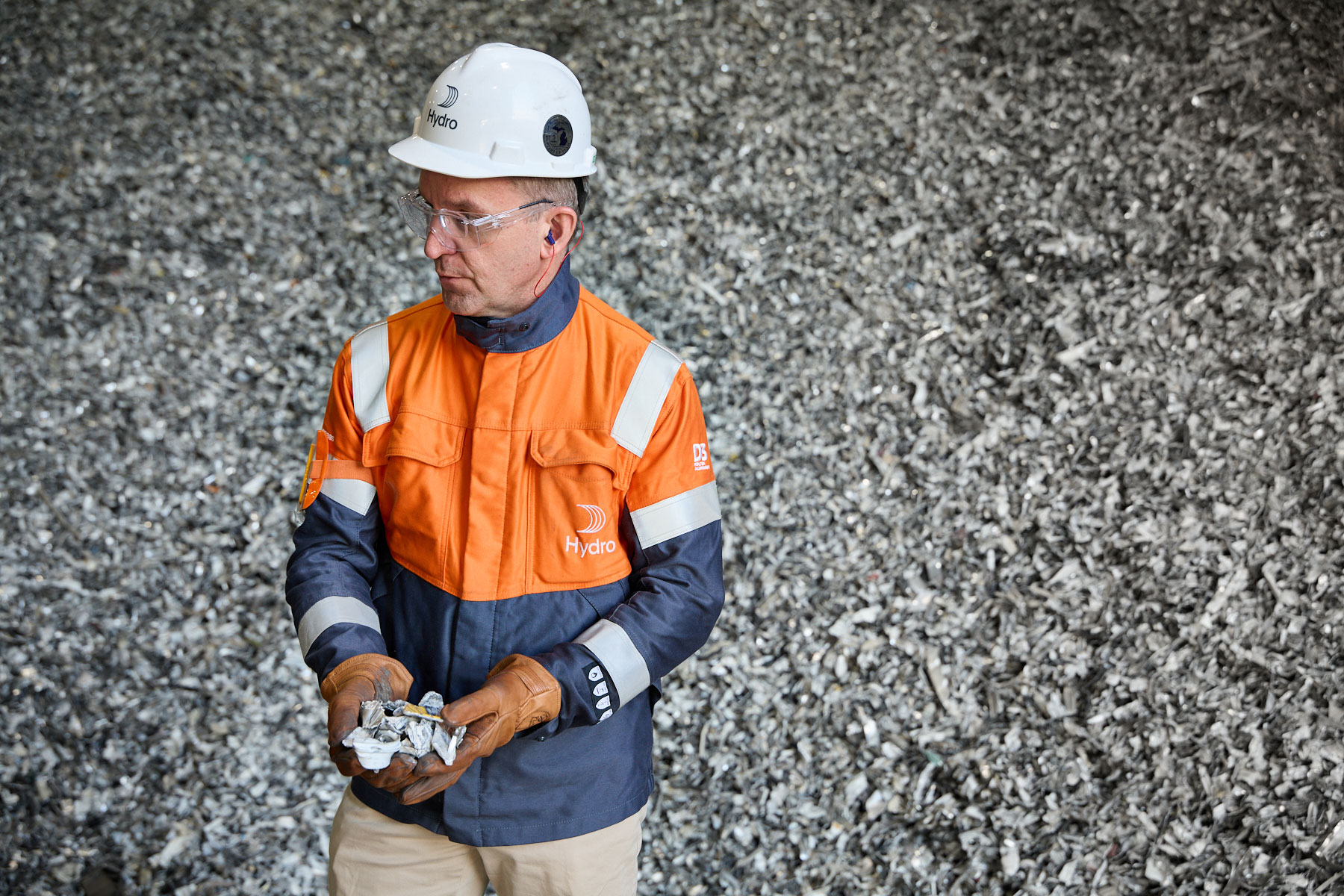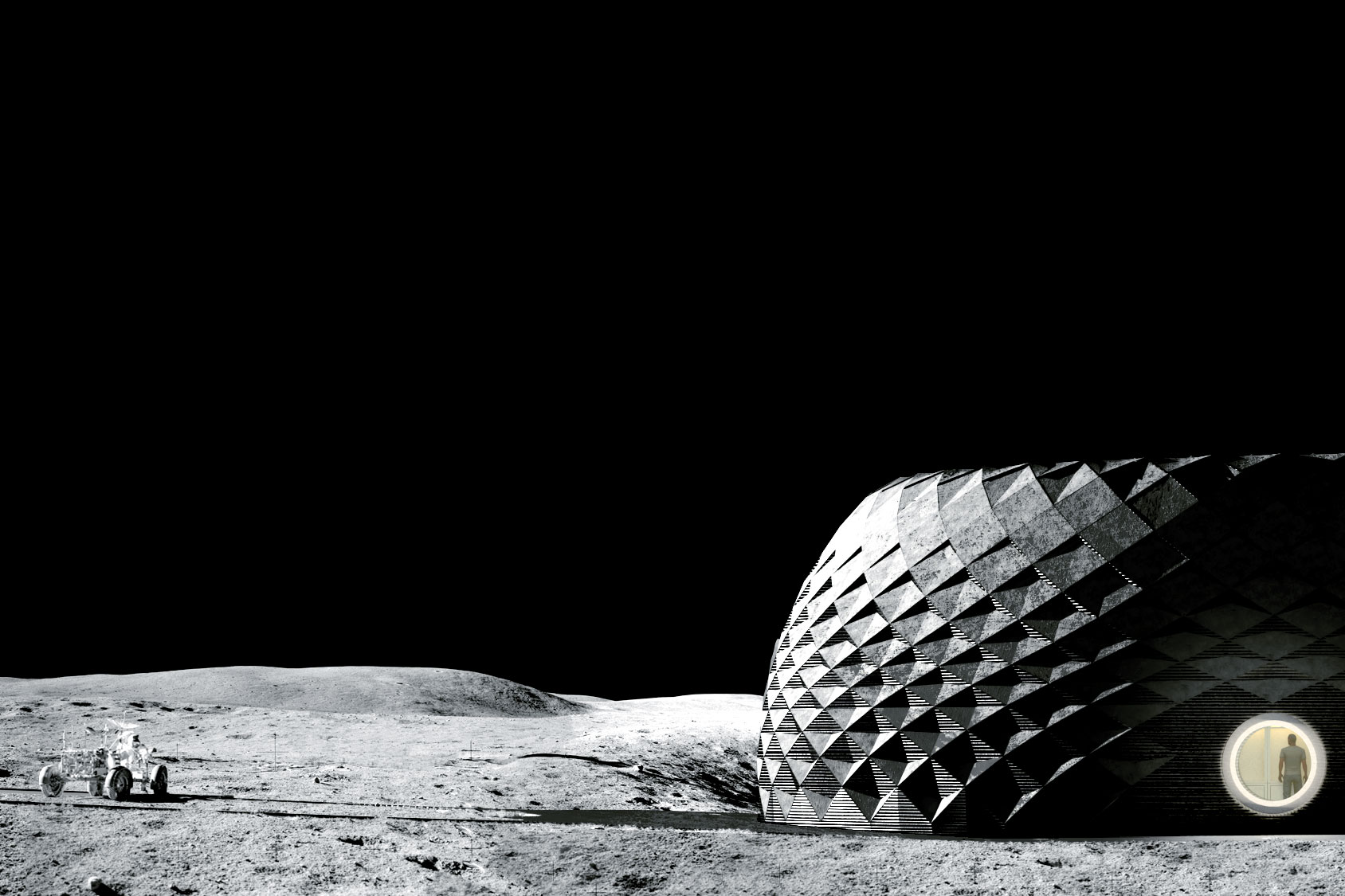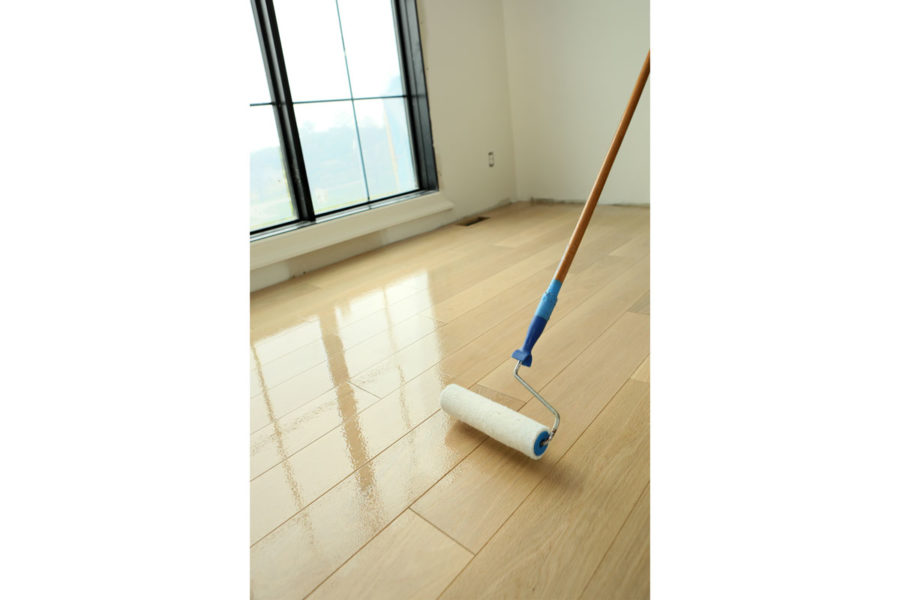It’s no secret that hardwood flooring offers a multitude of design benefits for residential and commercial applications: beauty, quality, and timelessness. Hardwood flooring also contributes strongly to a circular economy, which is based on a system of designing to reduce waste by elongating the life of existing products and materials.
Sustainably speaking, refinishing hardwood flooring surfaces can reduce the carbon footprint by more than 75% compared to floor replacement. Architects and designers contribute to a healthy, sustainable, and circular environment in many ways, including new builds and renovations of commercial and residential interiors.
There are numerous options and best practices to consider when recommending and designing flooring for customers. Here are just a few.
1. Refurbish, rather than replace, hardwood flooring for sustainability and value.

Photo courtesy of Bona
The IVL Swedish Environmental Research Institute (IVL) determined that refinishing flooring can achieve a 78% to 92% carbon footprint reduction compared to replacing that same flooring. This statistic, coupled with the wide variety and quality of wood-based flooring and coatings available on the market today, means architects and designers need to carefully specify and source the right materials with the flooring’s intended use and sustainability in mind. Things to consider include:
- The type and volume of foot traffic to occur on the flooring
- The maintenance needed for cleanliness and preservation of the surface
- The customer’s short-term and longer-term budget
By choosing a good quality hardwood floor that will withstand the test of time, customers can save significantly over the years through refurbishing instead of replacing floors. Designers should advise customers on the overall long-term cost involved—and how sustainability can be achieved—in their flooring decision.
The IVL report analyzed the possibility of improving an overall carbon footprint by refinishing rather than replacing these flooring surfaces and found that by refinishing hardwood or resilient floors, owners can realize 90% or more savings—including transport, electricity use, consumables, and materials—compared with replacing the wood flooring.
“This research study offers a wholistic view and is tangible proof that refinishing a resilient or wood floor surface is more sustainable than replacement all while improving the appearance of a floor,” says Björn Johansson, global environmental manager, Bona. “For more than 100 years Bona has developed products and systems that offer a more sustainable floor renovation solution. To have the support of this report validating the benefits of the Bona system is affirming.”
2. Prefinished and site-finished hardwood offers a multitude of eco-friendly benefits.
- Photo courtesy of Bona
A Pew Research survey found that 83% of Americans believe climate change to be a threat to the US. In addition to recent climate events that have changed environmental perceptions, the consciousness in younger generations is leading to increased calls for change. Consumers have high expectations for sustainable products and will pay more for them.
Consumers are also putting pressure on designers, homebuilders, and retailers to more closely evaluate the products they recommend and sell—and sustainable hardwood flooring is a prime example of this circular economy movement.
Hardwood is appropriate for any setting and is increasingly seen in commercial, retail, hospitality, health care, wellness and residential environments. Hardwood flooring works well in these locations because:
- It’s a natural, renewable, and sustainable resource.
- Hardwood can be carbon off-set when installed and maintained properly.
- It can be renewed by sanding and finishing.
- Hardwood can be refreshed with color changes or by adding borders or medallions as a design element or for way-finding in commercial settings.
- Hardwood can last a lifetime and offer sustainable positive air quality for all who inhabit the space.
Solid hardwood can be purchased as a prefinished or site-finished product, and each type offers various benefits. When using either option, designers should always specify Forest Stewardship Council (FSC) certified wood, which means the wood comes from responsibly managed and environmentally conscious forests.
Solid prefinished hardwood has a thicker wear layer that allows for multiple deep cleaning, sanding, and finish opportunities, and is an excellent choice for commercial applications when properly acclimated. Engineered prefinished hardwood tends to be a budget-friendly alternative while still providing a long lifecycle and sustainability benefits, particularly if it has a suitable wear layer.
Because it arrives to the job site already finished, the installation process is completed more quickly than site-finished hardwood. When specifying prefinished hardwood, verify that environmentally friendly materials and practices were used in the finishing process.
Site-finished hardwood is sanded and finished after being installed at the job site and therefore,offers a flatter floor and more flexibility in color and stain choices. It can also accommodate last-minute changes better than prefinished hardwood. Site-finished hardwood results in a unique, custom floor and is available in wider widths and longer lengths to create a unique design aesthetic.
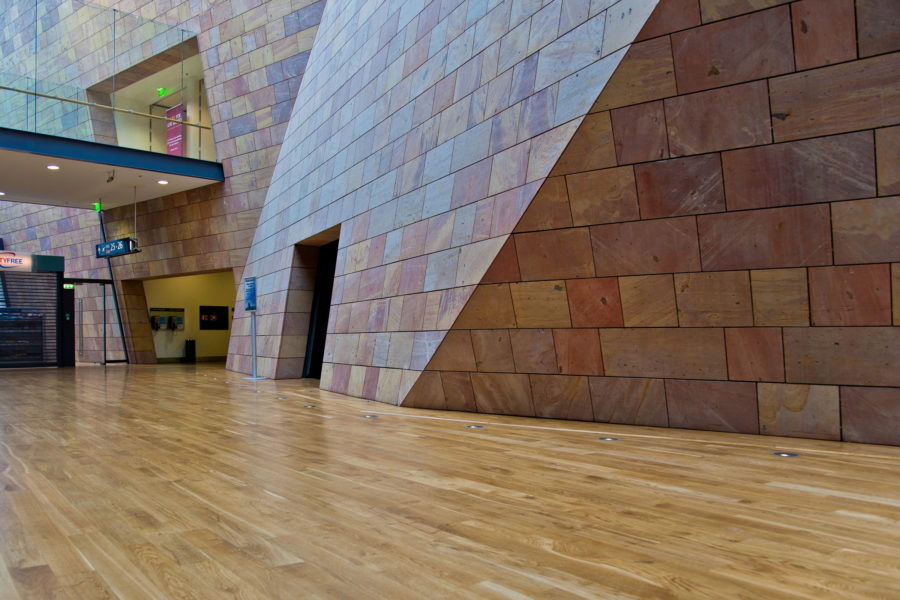
Photo courtesy of Bona
This option leads to a lower lifetime cost of the floor when maintained appropriately. Wood dust is a known carcinogen and to avoid dusty, toxic results, it’s vital to use a floor finisher who’s trained and certified to provide eco-friendly and healthy finish solutions. I recommend that designers work only with a Bona-Certified Craftsmen who are trained, professional craftspeople and considered the best in the industry.
Here’s an example: In 1997 leaders at Nike World Headquarters made a commitment to saving energy and preserving our environment while completing its new buildings. All four buildings were built according to Portland General Electric’s (PGE) Earth Smart guidelines for a 20% reduction of the earth’s energy load.
Since low-toxicity building products were required to meet the Earth Smart requirements, Bona Traffic was the hardwood floor finish selected. Bona Traffic was used to coat the first-grade maple floors in the cafeterias, hallways, and gift shop, as well as the executive offices. It provided the durability, environmental responsibility and clear, non-ambering beauty, which met Nike’s interior architectural design and environmental responsibility requirements. Nike World Headquarters has successfully maintained these quality floors for nearly a quarter of a century, with Bona eco-friendly waterborne solutions.
3. When it comes to finishes, waterborne solutions are the eco-friendly choice.
- Photo courtesy of Bona
Waterborne stains, finishes, and natural penetrating oils are high-performance and eco-friendly flooring solutions, created with advanced technology compared to other finishing options. There is a plethora of environmental benefits of waterborne solutions, including:
- Low VOCs
- No harmful fumes or need to vacate the job site
- Safe for people with chemical sensitivities
Waterborne solutions also dry faster—and, again, without the high level of VOCs than their oil-based counterparts—which means that construction workers or homeowners can inhabit the floor surface faster. The dry time of a waterborne solution is two to three hours per coat with 100% curing within 72 hours, versus oil-based solutions, which dry in eight to 12 hours per coat with 100% curing in two weeks.
Architects and designers need to be mindful of the safety, health, and environmental standards employed by finishing manufacturers. Verify a manufacturer’s certifications when specifying finishing solutions for your projects flooring. Interior products should meet stringent chemical emissions limits designed to maintain healthy interior surroundings.
Many design and building professionals choose to work with Bona for the quality of our products and our focus on sustainability. Our full system of hardwood flooring solutions range from adhesives to stains to finishes. Bona’s waterborne hardwood floor finishes and natural penetrating oils have been GREENGUARD certified since 2005. Recently Bona’s full line of adhesives received the stringent GREENGUARD Gold certification.
Bona also adheres to Green Seal certification standards, which maintain safety, health, and environment (SHE) criteria and regulate the use of hazardous chemicals in products. The GREENGUARD and Green Seal certifications are stringent processes with frequently changing benchmarks backed by research and facts.
4. Maintain hardwood sustainability through proper care.
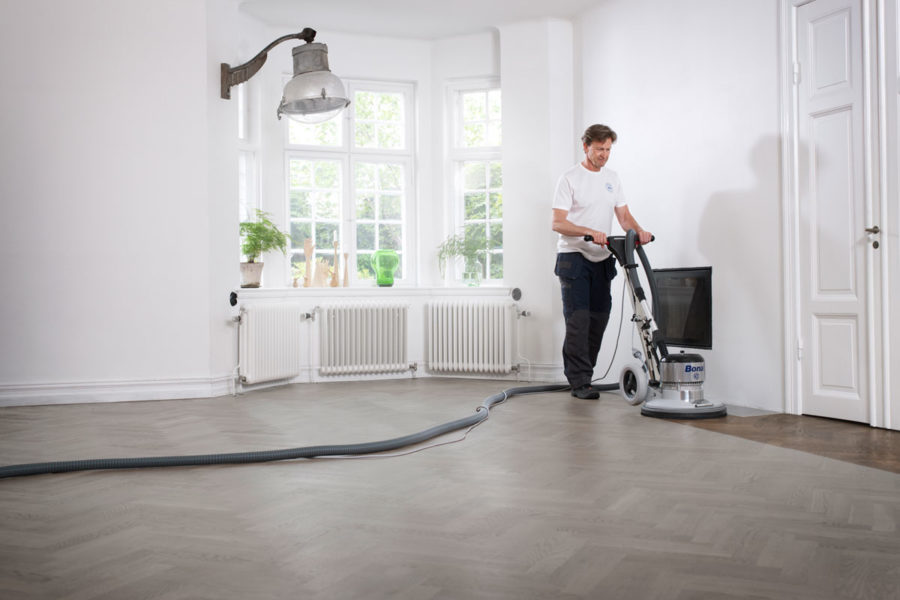
Courtesy of Bona
In addition to specifying quality flooring products and eco-friendly finishing solutions, proper maintenance is essential to providing a circular economy for the building industry. Floor care is often referred to as “the most unspecified aspect of hardwood floors.” Assuming the right materials and finishes have been properly installed and applied, maintenance is the key to the wellbeing and sustainability of commercial and residential flooring. Maintenance includes:
- Cleaning (frequency, materials, and products and tools used)
- Recoating (specifying frequency and padding versus screening)
- Repairing and sanding, which will depend on the manufacturer guidelines based on the products installed and solutions applied
Designers and architects should be certain that owners, maintenance personnel, and end-users are knowledgeable of proper maintenance for the floors they will inhabit and care for, including basic cleaning, deep cleaning, and recoating to maintain the floor’s life and respect the environment. Stakeholders also need to be aware of the cost and conservational implications of improper care.
As an example, the janitorial service team improperly cared for the flooring of a large Colorado shopping mall by treating the wood floor like a vinyl composition tile (VCT). The harmful stripping process created a hazy discoloration in the wood floor finish, and eventually the excessive amounts of water used caused the wood floor to cup. This incorrect maintenance cost the building owner $34,000 to have the floor refinished. The mall owners switched to a maintenance program of dry-dust mopping daily, auto-scrubbing twice per week, and specifying a 12 to 18-month recoating schedule.
The mall, which sees 15 million customers annually, cut its labor costs for maintaining the hardwood floors by 75% ($60,000 annually), extending the life cycle of the floor and significantly lowering the long-term cost of the flooring system.
5. Stick with a sustainable and safe adhesive.

Photo courtesy of Bona
Similar to proper maintenance, proper use of adhesives is key to adding years to the life of a floor. Adhesives are used most often to install and secure wood floors when nailing is not an option—such as with concrete slab environments—and when sound transmission is an issue as in multifamily and high-rise applications. Adhesives are also advisable in these instances:
- When radiant heating is involved, to avoid puncturing the tubing with nails
- When installing prefinished wood, as nailing can damage the surface of the wood
- When installing plank flooring with a glue assist (wider widths result in fewer nails per SF)
“The construction industry builds and renovates homes very efficiently nowadays, creating tighter window and door seals,” says Lisa King, Bona SHE specialist. “Those energy efficiencies also increase the toxins inside our home because they have nowhere to escape. We have to make our products with less chemicals while maintaining their effectiveness.”
Similar to coating solutions, be sure the adhesives manufacturer follows environmentally sustainable practices for producing adhesives and provides third-party verified certification. According to the EPA, people spend 90% of their time indoors. It’s our responsibility to design safe and livable solutions.
To help ensure adhesives support the maintenance and life cycle of the wood you’re installing, I recommend specifying an adhesive that not only contains moisture-controlling properties but also to use a roll-on moisture barrier (continuous film layer) for optimum moisture protection.
Designing Safe, Durable and Inviting Homes
Wood makes a home warm and inviting. When specified and cared for properly, wood also makes a home safe, environmentally friendly, durable, and easy to maintain.
Architects and designers can make a significant difference in the quality of our environment and the value customers receive for their projects, as well as the wellbeing and lifecycle of our commercial and residential flooring, by specifying eco-friendly products and insisting on working with certified, trained flooring professionals who use zero VOC adhesives and low VOC waterborne finishes. Together these actions help refinishing and renovating hardwood floor surfaces contribute to a circular economy.

